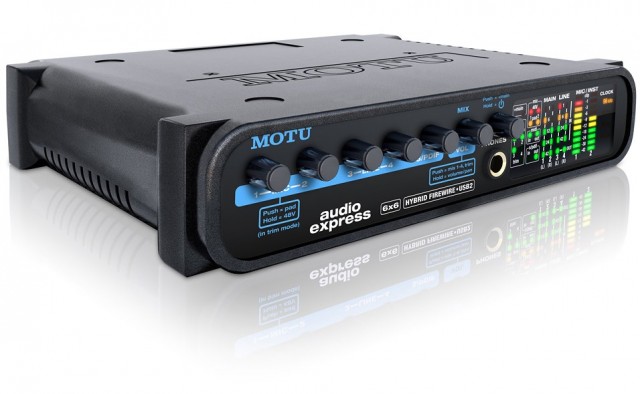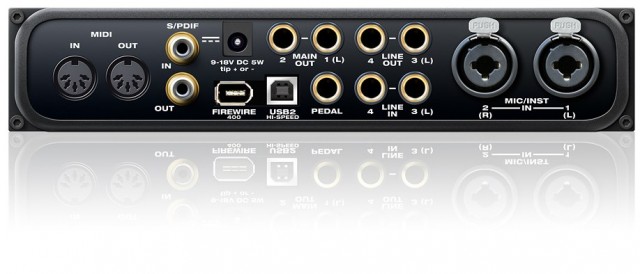The competition for your audio interface dollar is pretty heated these days, but MOTU’s latest – the Audio Express – packs a pretty impressive feature set for something costing US$449 list. It’s both a 6×6 audio interface and a mixer, with standalone mixer functionality so you can mix signals from the front-panel knobs without a computer attached. It also has connectivity features generally seen only in pricier, physically-larger boxes. MOTU tells CDM the quality is equal to their higher-end offerings, and other rivals in the $500-800 range.
MOTU winds up on my short list as far as hardware that makes happy audio interface owners. For now, we’ll just have to look at the Audio Express “on paper.” That looks like this:
- 6×6 interface, 6×8 independent input/output channels.
- Use either FireWire (with bus power, generally only if you’re on a Mac) or USB2 (without bus power).
- Some nice monitoring options. Each output pair – main, line, S/PDIF, and phones – can have its own independent mix of six inputs, with or without your computer tracks. And naturally, that also lends itself to use by DJs and live electronic performers.
- Two mic/guitar combo jacks: Hi-Z 1/4″ guitar input or XLR mic input with phantom power, 20dB pad, etc. (Often only one is a guitar jack, especially at this price.)
- Balanced stereo inputs, balanced stereo outputs, 24-bit/96kHz S/PDIF digital.
- Trim on the volume inputs is digitally-controlled analog, for approximately 1dB adjustments.
- Front-panel mixing with LEDs for metering and dedicated volume knobs on each input.
- Time code support, low jitter.
- Connect your MIDI gear: sample-accurate MIDI on 1 in x 1 out.
- Connect your analog gear: DC-coupled TRS outputs for software like MOTU’s own Volta.
- Operate as a standalone mixer, no computer – just connect power.
- Plug-and-play USB2 operation, plus 32-bit and 64-bit native drivers for Mac and Windows.
You can also rack-mount it as a half-rack unit, although I like the ability to toss something this small into a backpack or messenger bag to head to the gig.
To me, just having dedicated front-panel input knobs, decent-enough I/O, and standalone mixing on a box with good timing and audio quality is pretty nice. I have to say, I think the Audio Express could fill an ideal niche as a mid-range audio interface – it’s a crowded field if you get cheaper or if you get more expensive, but there isn’t much in the $400-500 budget that competes well with this. And for that reason, I’ll try to get one in for review. As commenters suggest, the real question is whether you spend a little extra on the additional I/O on MOTU’s UltraLite. But the UltraLite doesn’t have those convenient front-panel mixing knobs, and I’m not sure everyone necessarily needs DSP effects. I think it depends on your needs, and we’ll have to see what street may be on the Audio Express.
MOTU Audio Express Product Page
Also, judging from those product shots, it’ll look great on my clean, white, mirrored lab table next to my MacBook Pro. Boy, am I glad I got that off the set of THX 1138.

